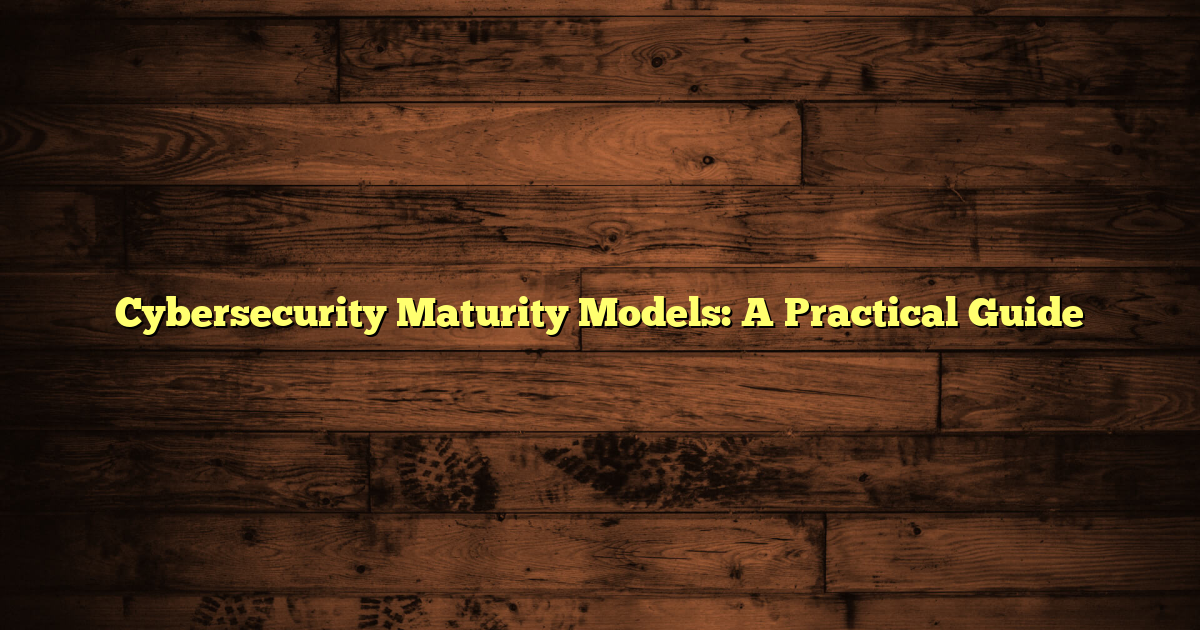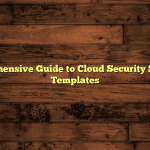Cybersecurity Maturity Models: A Practical Guide
Table of Contents:
- What Is a Cybersecurity Maturity Model?
- Why Do Organizations Need One?
- How Does It Work?
- Popular Models
- The Five Core Functions
- Why Continuous Improvement Matters
- Real-World Example
- Choosing Right Model For Your Needs
- Wrapping Up
- FAQ
Cybersecurity Maturity Models: A Practical Guide
Did you know that ignoring cybersecurity isn’t just risky, it’s a business liability? A cybersecurity maturity model is a structured approach aiding establishments in assessing how well they handle cyber threats. It’s akin to checking your company’s “cybersecurity health” by evaluating how well you:
- Detect risks,
- Shield your data,
- Identify attacks,
- Take action when incidents happen,
- Get back on track afterward.
What Is a Cybersecurity Maturity Model?
A cybersecurity maturity model provides a precise picture of your existing position. It helps you identify what steps you should take next. Think of this tool as a roadmap. It does not assume that your security is at par. It measures your progress in an organized method. The models typically have different phases of growth, like:
- Beginner (initial),
- Intermediate (managed),
- Advanced (defined),
- Expert (quantitatively managed),
- Top-tier (optimized).
Every single level signifies improved processes, as well as more substantial defenses.
Why Do Organizations Need One?
Cyber threats are widespread now. One national cyber incident response team reported over 900 million cyber threat occurrences within only three months in early 2024. Businesses cannot ignore security any longer.
A maturity model assists establishments in staying ahead of the game. It enables them to identify what parts of their security program are well made. It will also highlight which parts need enhancement. For example, are all devices tracked? Is sensitive information protected? Are warnings from detection systems checked? These are a few of the questions that are resolved when you go through such an assessment.
By implementing a maturity model, establishments get better at deciding where they should invest:
- Time,
- Resources.
They make improvements to their security, rather than just responding only when a destructive situation occurs.
How Does It Work?
Most cybersecurity maturity models have similar steps.
- Assessment – You answer questions or review checklists about your current behaviors.
- Scoring – You are rated on several aspects, like risk management or incident reaction.
- Gap Analysis – You recognize where you fall short, when compared to accepted practices.
- Action Plan – You decide what modifications will help move you up to the next level.
The objective is not only getting a high score, instead it’s about making concrete enhancements that decrease risk gradually.
Popular Models
There are a few well-known frameworks:
- NIST Cybersecurity Framework (CSF) – It is favored because of its creation by the National Institute of Standards. It is also known as Technology, a well-respected U.S government entity known for setting standards across various areas. The NIST CSF concentrates on five main functions: Identify, Protect, Detect, Respond, next to Recover.
- CMMC (Cybersecurity Maturity Model Certification) – Largely utilized by defense contractors working with the U.S Department of Defense – they handle delicate government information.
- CIS Controls/C2M2 – Other frameworks such as those from CIS or C2M2 provide similar ways, yet might be customized for distinct sectors or requirements.
All of these models share a general idea: they help establishments grasp their advantages, not to mention weaknesses. This allows them to develop better defenses against cyber dangers.
The Five Core Functions
Let’s check out the five core functions from NIST CSF. They appear everywhere.
- Identify – You should be aware of your assets. Is there hardware connected online? Are there software operations running?
- Protect – You should safeguard your assets so only certified people get entry to sensitive data.
- Detect – Setup tracking tools. If somebody seeks to break into systems unnoticed, you notice it.
- Respond – Have plans available if conditions get dicey. You should know who does what during occurrences.
- Recover – Get back on course following an attack. Do it without losing excessively: time, money, data, confidence.
Each function has guidelines inside the frameworks, so nothing will be left out when developing robust digital protection that surrounds business operations.
Now, let’s discuss why this matters beyond ticking boxes off lists.
Why Continuous Improvement Matters
Cybercriminals aren’t decreasing any time soon. There are attack techniques appear constantly – this requires constant vigilance from defenders. The structured approach via such models guarantees improvement, instead of stagnation. Once the initial fixes are used after an incident analysis has been completed, along with so on… For instance, imagine establishment X endured ransomware last year. They spent months recovering. Then it implemented controls, based on lessons they had learnt. But, they stopped there. They presumed the job was done. Later on, a breach occurs, because of attackers finding new vulnerabilities. There was no ongoing assessment made when building a culture using regular reviews with guidance from a chosen framework. This cycle highlights importance in adopting, but also regularly revisiting assessments. You should follow the guidance given through established techniques. This ensures nothing is left when defending valuable digital assets: customers, employees, partners, stakeholders, as well as the overall brand itself.
Real-World Example
Defense contractors working with U.S government agencies must meet strict standards outlined under CMMC program. This is to safeguard federal contract details, next to controlled unclassified details shared amongst parties. This is for projects of important national interest. By following levels within this scheme, establishments demonstrate maintaining appropriate safeguards. They can maintain the sensitivity of the materials handled. By doing so, it provides the trust to continue getting contracts, supporting vital missions countrywide, along with on a global scale too.
Choosing Right Model For Your Needs
Not every establishment needs the same framework. However, they do overlap in terms of principles underlying them all. The models focus on decreasing exposure, enhancing flexibility when face to face with evolving threats. Small businesses might start simply. Perhaps they can use available resources via the NIST website. Larger enterprises need formal approaches – this might involve audits to prove compliance with laws governing the sector they work within. It is important to understand the current state of readiness. Then, addressing potential issues before they become crises – this thanks to a systematic approach offered through adoption.
Wrapping Up
To summarize, implementing a proper cybersecurity maturity model isn’t optional.
FAQ
What are the benefits of using a cybersecurity maturity model?
Employing a cybersecurity maturity model helps your establishment in figuring out how well you are handling cyber threats. It helps to improve security posture, make smart decisions about investments, stay ahead of the game, minimize risks.
How do I choose the right model for my organization?
Select a model that meets the needs and objectives of your organization. Consider the industry, size, as well as regulatory requirements of your establishment. NIST CSF or CIS Controls are good start, while CMMC may need to be considered when working for US DoD.
How often should I reassess my cybersecurity maturity?
Reassess your cybersecurity maturity regularly to accommodate the current threat, maybe annually. Reassessment is important so that adjustments are made according to new conditions.
Resources & References:
- https://dodcio.defense.gov/cmmc/About/
- https://www.sentinelone.com/cybersecurity-101/cybersecurity/cyber-maturity-assessment/
- https://c2a-sec.com/regulation-spotlight-understanding-the-cybersecurity-capability-maturity-model-c2m2-a-path-to-resilience/
- https://cyesec.com/glossary/what-is-a-cybersecurity-maturity-assessment
- https://cybersierra.co/blog/nist-csf-maturity-levels-everything-you-need-to-know/





